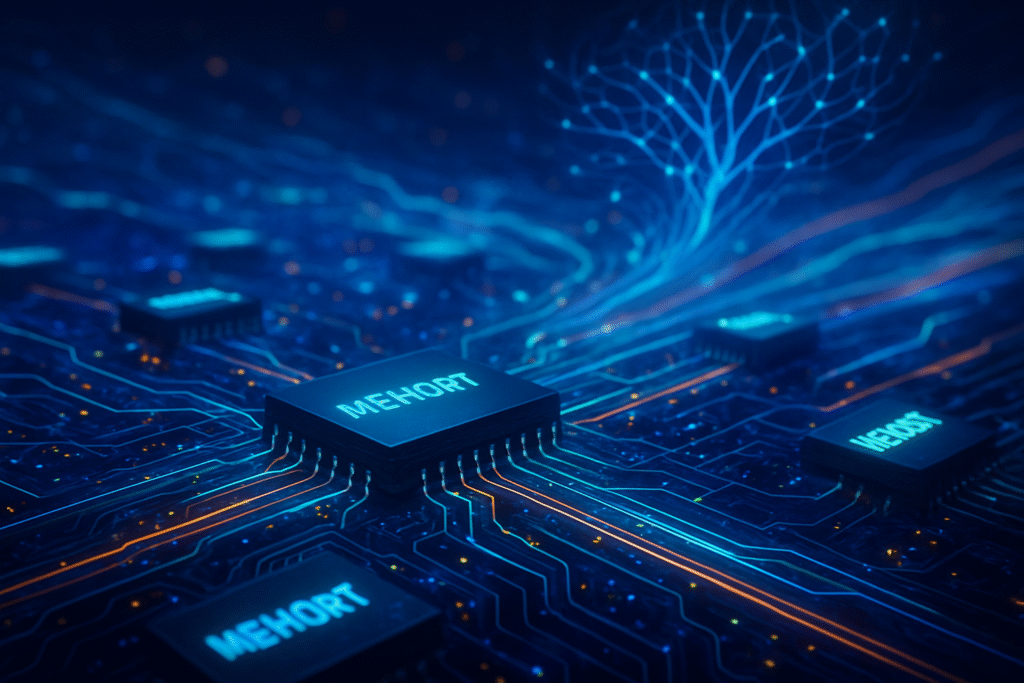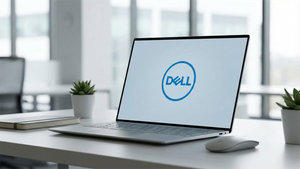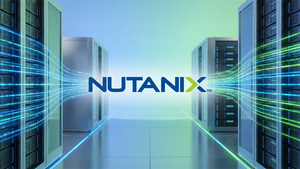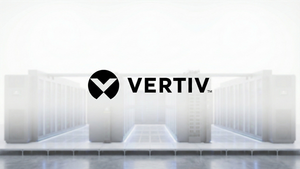
San Jose, CA – October 4, 2025 – Micron Technology (NASDAQ: MU) has emerged as a dominant force in the resurgent memory chip market, riding the crest of an unprecedented wave of demand driven by artificial intelligence. The company's recent financial disclosures paint a picture of record-breaking performance, underscoring its strategic positioning in a market characterized by rapidly escalating prices, tightening supply, and an insatiable hunger for advanced memory solutions. This remarkable turnaround, fueled largely by the proliferation of AI infrastructure, solidifies Micron's critical role in the global technology ecosystem and signals a new era of growth for the semiconductor industry.
The dynamic memory chip landscape, encompassing both DRAM and NAND, is currently experiencing a robust growth phase, with projections estimating the global memory market to approach a staggering $200 billion in revenue by the close of 2025. Micron's ability to capitalize on this surge, particularly through its leadership in High-Bandwidth Memory (HBM), has not only bolstered its bottom line but also set the stage for continued expansion as AI continues to redefine technological frontiers. The immediate significance of Micron's performance lies in its reflection of the broader industry's health and the profound impact of AI on fundamental hardware components.
Financial Triumphs and a Seller's Market Emerges
Micron Technology concluded its fiscal year 2025 with an emphatic declaration of success, reporting record-breaking results on September 23, 2025. The company's financial trajectory has been nothing short of meteoric, largely propelled by the relentless demand emanating from the AI sector. For the fourth quarter of fiscal year 2025, ending August 28, 2025, Micron posted an impressive revenue of $11.32 billion, a significant leap from $9.30 billion in the prior quarter and $7.75 billion in the same period last year. This robust top-line growth translated into substantial profitability, with GAAP Net Income reaching $3.20 billion, or $2.83 per diluted share, and a Non-GAAP Net Income of $3.47 billion, or $3.03 per diluted share. Gross Margin (GAAP) expanded to a healthy 45.7%, signaling improved operational efficiency and pricing power.
The full fiscal year 2025 showcased even more dramatic gains, with Micron achieving a record $37.38 billion in revenue, marking a remarkable 49% increase from fiscal year 2024's $25.11 billion. GAAP Net Income soared to $8.54 billion, a dramatic surge from $778 million in the previous fiscal year, translating to $7.59 per diluted share. Non-GAAP Net Income for the year reached $9.47 billion, or $8.29 per diluted share, with the GAAP Gross Margin significantly expanding to 39.8% from 22.4% in fiscal year 2024. Micron's CEO, Sanjay Mehrotra, emphasized that fiscal year 2025 saw all-time highs in the company's data center business, attributing much of this success to Micron's leadership in HBM for AI applications and its highly competitive product portfolio.
Looking ahead, Micron's guidance for the first quarter of fiscal year 2026, ending November 2025, remains exceptionally optimistic. The company projects revenue of $12.50 billion, plus or minus $300 million, alongside a Non-GAAP Gross Margin of 51.5%, plus or minus 1.0%. Non-GAAP Diluted EPS is expected to be $3.75, plus or minus $0.15. This strong forward-looking statement reflects management's unwavering confidence in the sustained AI boom and the enduring demand for high-value memory products, signaling a continuation of the current upcycle.
The broader memory chip market, particularly for DRAM and NAND, is firmly in a seller-driven phase. DRAM demand is exceptionally strong, spearheaded by AI data centers and generative AI applications. HBM, in particular, is witnessing an unprecedented surge, with revenue projected to nearly double in 2025 due to its critical role in AI acceleration. Conventional DRAM, including DDR4 and DDR5, is also experiencing increased demand as inventory normalizes and AI-driven PCs become more prevalent. Consequently, DRAM prices are rising significantly, with Micron implementing price hikes of 20-30% across various DDR categories, and automotive DRAM seeing increases as high as 70%. Samsung (KRX: 005930) is also planning aggressive DRAM price increases of up to 30% in Q4 2025. The market is characterized by tight supply, as manufacturers prioritize HBM production, which inherently constrains capacity for other DRAM types.
Similarly, the NAND market is experiencing robust demand, fueled by AI, data centers (especially high-capacity Quad-Level Cell or QLC SSDs), and enterprise SSDs. Shortages in Hard Disk Drives (HDDs) are further diverting data center storage demand towards enterprise NAND, with predictions suggesting that one in five NAND bits will be utilized for AI applications by 2026. NAND flash prices are also on an upward trajectory, with SanDisk announcing a 10%+ price increase and Samsung planning a 10% hike in Q4 2025. Contract prices for NAND Flash are broadly expected to rise by an average of 5-10% in Q4 2025. Inventory levels have largely normalized, and high-density NAND products are reportedly sold out months in advance, underscoring the strength of the current market.
Competitive Dynamics and Strategic Maneuvers in the AI Era
Micron's ascendance in the memory market is not occurring in a vacuum; it is part of an intense competitive landscape where technological prowess and strategic foresight are paramount. The company's primary rivals, South Korean giants Samsung Electronics (KRX: 005930) and SK Hynix (KRX: 000660), are also heavily invested in the high-stakes HBM market, making it a fiercely contested arena. Micron's leadership in HBM for AI applications, as highlighted by its CEO, is a critical differentiator. The company has made significant investments in research and development to accelerate its HBM roadmap, focusing on delivering higher bandwidth, lower power consumption, and increased capacity to meet the exacting demands of next-generation AI accelerators.
Micron's competitive strategy involves not only technological innovation but also optimizing its manufacturing processes and capital expenditure. While prioritizing HBM production, which consumes a significant portion of its DRAM manufacturing capacity, Micron is also working to maintain a balanced portfolio across its DRAM and NAND offerings. This includes advancing its DDR5 and LPDDR5X technologies for mainstream computing and mobile devices, and developing higher-density QLC NAND solutions for data centers. The shift towards HBM production, however, presents a challenge for overall DRAM supply, creating an environment where conventional DRAM capacity is constrained, thus contributing to rising prices.
The intensifying competition also extends to Chinese firms like ChangXin Memory Technologies (CXMT) and Yangtze Memory Technologies Co. (YMTC), which are making substantial investments in memory development. While these firms are currently behind the technology curve of the established leaders, their long-term ambitions and state-backed support add a layer of complexity to the global memory market. Micron, like its peers, must navigate geopolitical influences, including export restrictions and trade tensions, which continue to shape supply chain stability and market access. Strategic partnerships with AI chip developers and cloud service providers are also crucial for Micron to ensure its memory solutions are tightly integrated into the evolving AI infrastructure.
Broader Implications for the AI Landscape
Micron's robust performance and the booming memory market are powerful indicators of the profound transformation underway across the broader AI landscape. The "insatiable hunger" for advanced memory solutions, particularly HBM, is not merely a transient trend but a fundamental shift driven by the architectural demands of generative AI, large language models, and complex machine learning workloads. These applications require unprecedented levels of data throughput and low latency, making HBM an indispensable component for high-performance computing and AI accelerators. The current memory supercycle underscores that while processing power (GPUs) is vital, memory is equally critical to unlock the full potential of AI.
The impacts of this development reverberate throughout the tech industry. Cloud providers and hyperscale data centers are at the forefront of this demand, investing heavily in infrastructure that can support massive AI training and inference operations. Device manufacturers are also benefiting, as AI-driven features necessitate more robust memory configurations in everything from premium smartphones to AI-enabled PCs. However, potential concerns include the risk of an eventual over-supply if manufacturers over-invest in capacity, though current indications suggest demand will outstrip supply for the foreseeable future. Geopolitical risks, particularly those affecting the global semiconductor supply chain, also remain a persistent worry, potentially disrupting production and increasing costs.
Comparing this to previous AI milestones, the current memory boom is unique in its direct correlation to the computational intensity of modern AI. While past breakthroughs focused on algorithmic advancements, the current era highlights the critical role of specialized hardware. The surge in HBM demand, for instance, is reminiscent of the early days of GPU acceleration for gaming, but on a far grander scale and with more profound implications for enterprise and scientific computing. This memory-driven expansion signifies a maturation of the AI industry, where foundational hardware is now a primary bottleneck and a key enabler for future progress.
The Horizon: Future Developments and Persistent Challenges
The trajectory of the memory market, spearheaded by Micron and its peers, points towards several expected near-term and long-term developments. In the immediate future, continued robust demand for HBM is anticipated, with successive generations like HBM3e and HBM4 poised to further enhance bandwidth and capacity. Micron's strategic focus on these next-generation HBM products will be crucial for maintaining its competitive edge. Beyond HBM, advancements in conventional DRAM (e.g., DDR6) and higher-density NAND (e.g., QLC and PLC) will continue, driven by the ever-growing data storage and processing needs of AI and other data-intensive applications. The integration of memory and processing units, potentially through technologies like Compute Express Link (CXL), is also on the horizon, promising even greater efficiency for AI workloads.
Potential applications and use cases on the horizon are vast, ranging from more powerful and efficient edge AI devices to fully autonomous systems and advanced scientific simulations. The ability to process and store vast datasets at unprecedented speeds will unlock new capabilities in areas like personalized medicine, climate modeling, and real-time data analytics. However, several challenges need to be addressed. Cost pressures will remain a constant factor, as manufacturers strive to balance innovation with affordability. The need for continuous technological innovation is paramount to stay ahead in a rapidly evolving market. Furthermore, geopolitical tensions and the drive for supply chain localization could introduce complexities, potentially fragmenting the global memory ecosystem.
Experts predict that the AI-driven memory supercycle will continue for several years, though its intensity may fluctuate. The long-term outlook for memory manufacturers like Micron remains positive, provided they can continue to innovate, manage capital expenditures effectively, and navigate the complex geopolitical landscape. The demand for memory is fundamentally tied to the growth of data and AI, both of which show no signs of slowing down.
A New Era for Memory: Key Takeaways and What's Next
Micron Technology's exceptional financial performance leading up to October 2025 marks a pivotal moment in the memory chip industry. The key takeaway is the undeniable and profound impact of artificial intelligence, particularly generative AI, on driving demand for advanced memory solutions like HBM, DRAM, and high-capacity NAND. Micron's strategic focus on HBM and its ability to capitalize on the resulting pricing power have positioned it strongly within a market that has transitioned from a period of oversupply to one of tight inventory and escalating prices.
This development's significance in AI history cannot be overstated; it underscores that the software-driven advancements in AI are now fundamentally reliant on specialized, high-performance hardware. Memory is no longer a commodity component but a strategic differentiator that dictates the capabilities and efficiency of AI systems. The current memory supercycle serves as a testament to the symbiotic relationship between AI innovation and semiconductor technology.
Looking ahead, the long-term impact will likely involve sustained investment in memory R&D, a continued shift towards higher-value memory products like HBM, and an intensified competitive battle among the leading memory manufacturers. What to watch for in the coming weeks and months includes further announcements on HBM roadmaps, any shifts in capital expenditure plans from major players, and the ongoing evolution of memory pricing. The interplay between AI demand, technological innovation, and global supply chain dynamics will continue to define this crucial sector of the tech industry.
This content is intended for informational purposes only and represents analysis of current AI developments.
TokenRing AI delivers enterprise-grade solutions for multi-agent AI workflow orchestration, AI-powered development tools, and seamless remote collaboration platforms.
For more information, visit https://www.tokenring.ai/.





